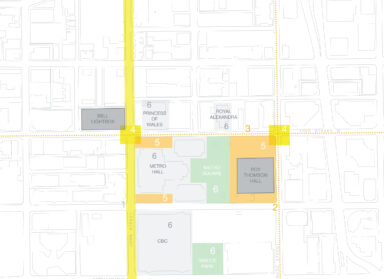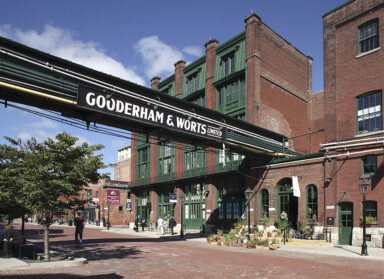In a time of increasing growth and reduced public spending in cities, how can we maximize the public realm as a shared interest? To explore this problem, ERA Architects joined forces with MITACS, a Canadian non-profit organization that supports research partnerships between academia and industry, and Jeff Biggar, a PhD student of urban planning at the University of Toronto.
Together the team launched a research project investigating approaches to the funding and governing of the public realm, with an emphasis on key challenges in the process for the city of Toronto. The study was designed to connect academic research and case studies on public space trends from other jurisdictions with the experiences of city builders and urban enthusiasts in Toronto: urban planners, developers, City Councillors, social entrepreneurs, and members from the non-profit and philanthropic sectors.
The project showcases innovative ways cities in North America and Europe are financing and developing public and open spaces through cultural planning and place-making frameworks. These examples serve as guideposts for how Toronto may optimize public and private resources for the public realm, such as how specific levers in Toronto’s policy landscape (i.e., Section 37 of the Planning Act) and partnership landscape (non-profit, philanthropic, and private groups) could be leveraged to increase the flow of investment.
One goal of the research is to expand awareness and understanding of current tools, policies, and approaches, drawing significant lessons for Toronto. This entails exploring the confluence of influences that shape the process and outcomes of public space projects. These involve various interrelated factors: design (aspirations and visions); planning and development (negotiation, policy, and regulatory procedures); use (context of space); and governance (responsibilities towards stewardship, maintenance, and funding).

Toronto continues to build up and out (e.g., densification), placing a greater demand on existing public spaces as well as a need for new ones. As buildings are increasingly built closer to one another, and citizens find themselves in denser spaces, we need to imagine the effect of greater density with far more consideration. Accordingly, residents and politicians alike need to be proactive about what their expectations are for the public realm. Our research dives into various ideas and practices that have led to transformative decisions on how the public realm is being re-imagined in various cities.
Partnering with MITACS provides an opportunity to support independent research, while bridging the gap between the knowledge and expertise of academia and the practical challenge planners and architects encounter. The program provides an opportunity for graduate students to work alongside a firm, in a way that provides mutual benefit to both parties. ERA is committed to nurturing expertise through research and experiential learning, and the MITACS project furthers ERA’s ongoing efforts to connect cultural and heritage issues with broader city building goals.
The final report of our collaboration will serve as a companion piece to previous reports ERA Architects has been involved in that advocate for the City of Toronto to create a connected public realm surrounding key cultural institutions and landscapes in the city. These include the “Cultural Institutions in the Public Realm,” “Defining the Public Realm: Waterfront Culture and Heritage Infrastructure Plan,” and “Growing Opportunities: Investing in, revitalizing, and sustaining Allan Gardens“ reports.
Coming soon: The full final report and research highlights.
Stay tuned…





